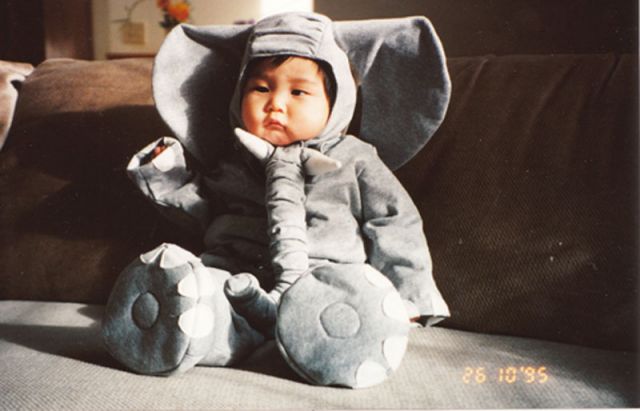Target recently came out with a new commercial that puts down homemade costumes in favor of store-bought ones. This makes sense, since the company sells costumes and we’re in a recession where a $19.99, 100% polyester Iron Man toddler costume may seem like a luxury. The commercial made me think of my own childhood Halloween costumes, which were all hand-made by my mother. Not only were they higher quality than the store-bought kind, they’ve lasted for generations. A Snow White costume she made for me (from real cotton and satin) lasted for more than 20 years and was handed around from family to family. In 1995, she made a matching baby-and-mama set of elephant costumes (see baby below) that still exist. I can only imagine that making a product that lasts for 20-some years, and is reused, may not be better for the environment as a whole, but may be better for landfills. I’m not sure what the carbon or water footprints of a homemade costume is versus the kind you’d buy at the store. I started looking into the carbon emissions for 3 yards of cotton versus 2 yards of polyester, but there are so many variables (shipping, manufacturing, etc) that I don’t think it’s really confirmable which is greener.
Of course, not every child has a parent who can, or has time to, cut a pattern, buy fabric, cut fabric, fit, and sew a costume. I definitely understand the appeal of just being able to buy one at Target and being done. Stores also have trend-based costumes, like Iron Man or Legally Blonde. I have to take issue with Target that homemade costumes are necessarily poor quality: mine won ‘best costume’ several years running. Thanks Mom!











